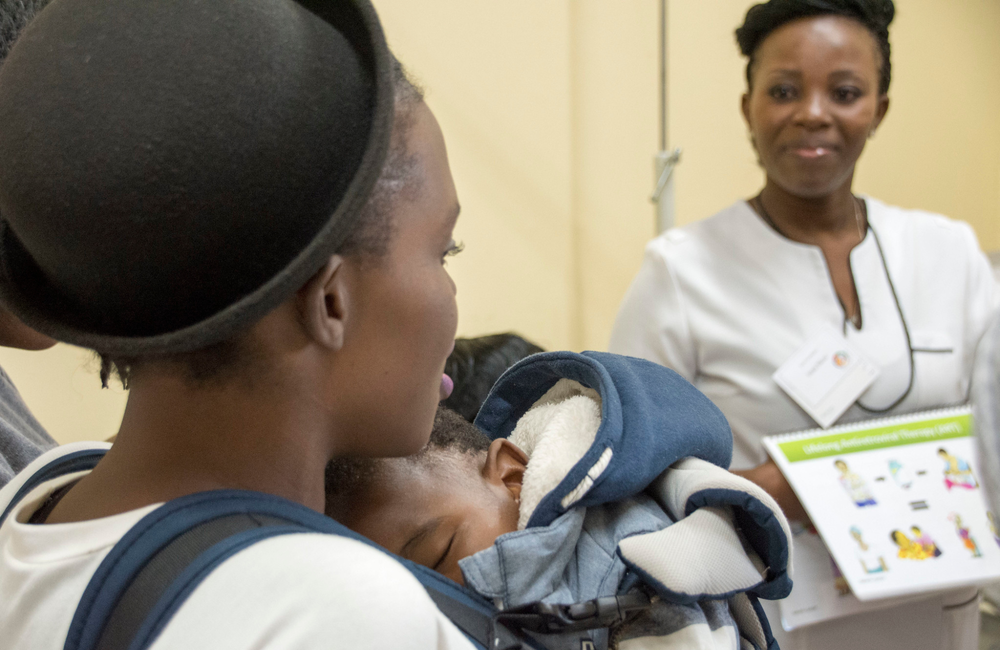
Adolescent girls who are mothers and living with HIV, experience more interruptions in their antiretroviral (ART) treatment, have poorer adherence, poorer clinical attendance and lower viral suppression rates compared to those who are not mothers, a recent study published in the Journal of the International AIDS Society found. The South African study also found that while having kind and respectful healthcare providers, and access to safe and affordable healthcare facilities led to better outcomes for young women living with HIV, those who were mothers reported lower access to these provisions than non-mothers.
Adolescent mothers were also less likely to attend support groups and less likely to report having short waiting times compared to those without children.
These findings suggest that all adolescent girls living with HIV should have equal access to healthcare. However, young women who are mothers may require additional efforts to ensure they receive necessary healthcare services.
In sub-Saharan Africa, nearly a quarter of new HIV diagnoses occur among adolescent girls and young women. Moreover, almost 30% of them have a child before the age of 20. Research indicates a strong link between HIV prevalence and early motherhood, highlighting the importance of addressing these dual vulnerabilities in HIV programming and maternal care.
Girls and young women living with HIV have lower rates of adherence to antiretroviral therapy, retention in care, clinic attendance, and viral suppression than older women. However, few studies have explored which healthcare factors could enhance HIV-related outcomes for them, especially among those who are mothers.
To bridge this gap, Dr Elona Toska and colleagues from the University of Cape Town, South Africa, investigated the associations between seven healthcare provisions and five HIV-related outcomes in a study of young women living with HIV in South Africa. They also conducted sub-analyses focusing on those who were mothers.
The seven healthcare provisions examined were self-reported by the participants:
- No ART stockouts
- Kind and respectful providers (not having providers who expressed anger, shouted or scolded)
- Attending support groups
- Short travel time (under one hour)
- Short waiting time (under one hour)
- Confidentiality
- Safe and affordable facilities.
These provisions were assessed against five HIV-related outcomes:
- ART adherence in the past week
- Consistent clinic attendance
- Uninterrupted ART treatment
- Viral suppression
- No tuberculosis symptoms.
Between 2017 and 2018, 774 young women aged 12 to 24 participated in the study. These participants were from the Eastern Cape province of South Africa and were recruited from 52 government and nine maternity clinics. Approximately 43% were mothers. Adolescent mothers were identified as participants who reported having at least one child before reaching 20 years.
Among the adolescent mothers, the majority (88%) had recently acquired HIV, whereas this was the case for only 18% of non-mothers. Adolescent mothers also reported higher rates of past-week food insecurity (34% vs. 24%), living in informal housing (25% vs. 14%), and belonging to poorer households (82% vs. 70%) compared to non-mothers.
Results
Regarding HIV-related outcomes, adolescent mothers were more likely to report lower rates of past-week ART adherence (74% vs 81%), lower consistent clinic attendance (76% vs 84%), and uninterrupted ART treatment (67% vs 81%) compared to non-mothers. Among those with viral load results, viral suppression rates were lower among mothers (64%) than non-mothers (79%).
However, many more adolescent mothers (87%) reported no TB symptoms than non-mothers (48%).
Among the seven healthcare provisions, young mothers were less likely than those without children to report having kind and respectful staff (82% vs. 88%), attending support groups (4% vs. 9%), accessing safe and affordable care (86% vs. 91%), and experiencing short waiting times (35% vs. 48%).
When comparing the impact of these provisions on HIV-related outcomes, only three showed significant associations:
- No ART stockouts were linked to uninterrupted ART treatment (aOR: 2.56, 95% CI 1.12−5.81, p = 0.025).
- Kind and respectful providers were associated with improvements in past-week adherence (aOR: 2.89, 95% CI 1.75−4.77, p<0.001), consistent clinic attendance (aOR: 1.72, 95% CI 1.00−2.97, p = 0.051), uninterrupted ART treatment (aOR: 2.26, 95% CI 1.39−3.67, p = 0.001), and viral suppression (aOR: 2.59, 95% CI 1.42−4.74, p = 0.002.
- Safe and affordable clinics were linked to improvements in clinic attendance (aOR: 1.87, 95% CI 1.01−3.44, p = 0.045), uninterrupted treatment (aOR: 1.95, 95% CI 1.11−3.42, p = 0.019), and no TB symptoms (aOR: 1.82, 95% CI 1.03−3.20 p = 0.038).
However, accessing support groups, short travel and waiting times (less than 1 hour each), and receiving confidential healthcare services did not show significant associations with any HIV-related outcomes.
Two healthcare provisions associated with improved outcomes for adolescent girls and young women regardless of motherhood status, were kind and respectful providers and safe and affordable facilities. However, adolescent mothers reported lower levels of access to these healthcare provisions.
Given the rising rates of adolescent motherhood, the researchers stress the urgent need for research into effective interventions that support healthcare providers in delivering adolescent-sensitive services. These interventions should target the reduction of morbidity and mortality among adolescents living with HIV. Additionally, to effectively reach adolescent mothers, it is essential to provide safe, affordable HIV, and health services that are characterised by kindness, responsiveness, and respect for the dignity of adolescents.
Toska E et al. Healthcare provisions associated with multiple HIV-related outcomes among adolescent girls and young women living with HIV in South Africa: a cross-sectional study. Journal of the International AIDS Society, 27: e26212, 2024 (open access).
DOI: https://doi.org/10.1002/jia2.26212
Full image credit: mothers2mothers. Image by USAID | Southern Africa. Available at www.flickr.com/photos/usaidsouthernafrica/26986098540 under a Creative Commons licence CC BY-NC 2.0.
